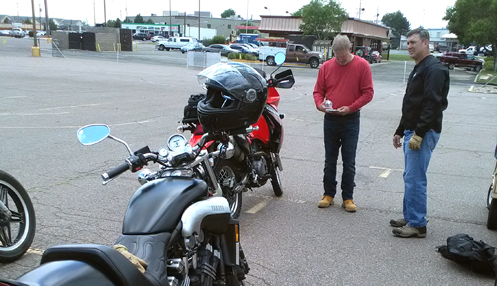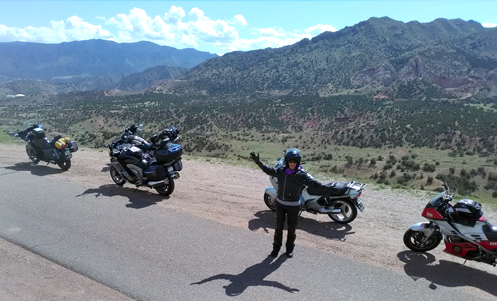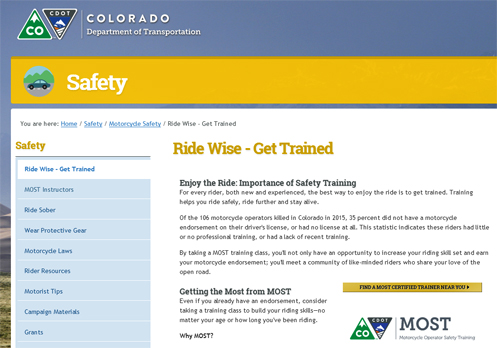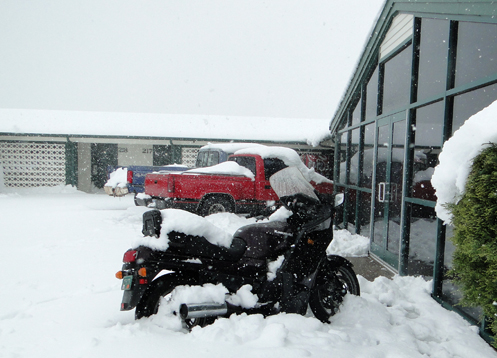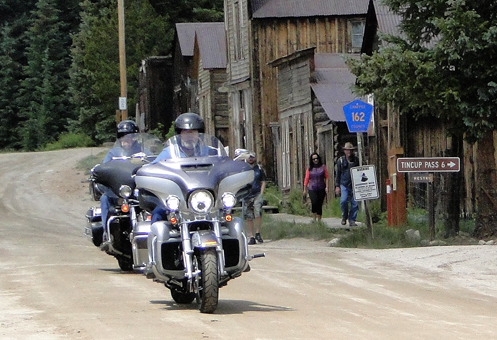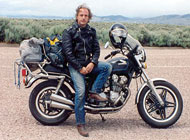Refreshing And Enhancing Skills In The Experienced Rider Course
Thursday, July 6th, 2017I took the Experienced Rider Course (ERC) once before. In fact, it was the first rider training course I ever took. Since then I’ve also taken the Beginning Rider Course twice, a dirtbike riding course, and I did the Rider Coach Training course, although I never worked as a Rider Coach. Here’s a tip: it never hurts to take a riding course–you always learn something new and improve existing skills.
The primary focus of this ERC I did on Friday was tight maneuvering. That wasn’t all, of course. The overall point is to learn to be a better rider everywhere. But if you can handle a big bike in tight quarters, handling that same bike in the wide open spaces is just that much easier. And sometimes that extra bit of control can make all the difference.
So I’ll get right to it. The number one thing I got out of this course was understanding what it takes to make a big bike make a really tight turn. Maybe you’ve seen these riders doing circles on big baggers that you couldn’t even dream of doing on a little 250. How the heck do they do that?
Don’t think I’m going to claim that I can do that now. But I am a little closer.
Bob, the instructor, talked about counter-weighting. If you need to lean the bike way over you also need to move your body the other direction to balance that out. Counter-weighting. To do this you put your weight on the outside peg and lean way back.
But the thing that got me was his instruction to keep your inside arm straight. Think about that. You’re turning left, you’ve got that left grip tucked in close to your body, and yet you need to keep your arm straight. If that’s not going to keep your weight off to the other side nothing will.
Fact is, I wasn’t sure it was even possible. I mean, OK, let’s say you’re riding a sport bike with little clip-ons. That seems doable. But my CB750 has a steer-horn handlebar that is 31 inches from tip to tip, and sitting upright in the saddle with the wheel turned as far as it can go the grip is about five inches from my stomach. I’m supposed to keep that arm straight?!
Guess what? It can be done. I couldn’t go it right off, but we went around again and again and I kept pushing myself and after awhile it happened. I’ve never made tighter turns with that bike in my life. I admit that the thought of putting weight on my outside peg never crossed my mind, though I suspect that happened naturally.
Most of the rest of the course was a refresh. We practiced techniques I know but maybe was a little rusty with. But then, I’ve taken this course before, as well as others. If you haven’t ever taken a riding course there’s probably a ton of stuff you’ve never learned. I don’t care if you’ve been riding 40 years I bet you’d learn something new. And you’ll be a better rider.
Is there any reason in the world that that would not be a good thing?
Biker Quote for Today
I hate being sexy but I’m a biker, so I can’t help it.
